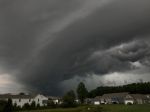SACRAMENTO, Calif. — Lake Tahoe, Clear Lake and four other large lakes in Northern California and Nevada are warming faster than the surrounding atmosphere, suggesting climate change may affect aquatic environments faster and sooner.
The findings are reported in a new study led by researchers at NASA’s Jet Propulsion Laboratory in Pasadena, Calif.
They used 18 years of temperature data from satellite sensors. It is believed to be the first time data have been dissected to reveal lake surface temperature over a period that long.
The other lakes in the study are Lake Almanor and Mono Lake in California, and Pyramid Lake and Walker Lake in Nevada.
Results show that the surface water temperature of the lakes rose two times faster, on average, than the regional air temperature.
“It was a big surprise to see that,” said Philipp Schneider, the study’s lead author and a post-doctoral research scientist at the NASA lab.
“If it turns out they’re actually changing faster than the air temperature, then there’s a whole new phenomenon going on here,” he said. “The lake ecosystems are going to be very much affected, especially because the trend we observed seems to be quite rapid.”
The study was published in the November issue of Geophysical Research Letters, a peer-reviewed science journal.
Schneider said more research, such as comparing water temperature with local air temperature changes at each lake, is needed before lake warming can be attributed to climate change.
For this study, that comparison was done at Lake Tahoe. For the rest of the lakes, results were compared with regional air temperatures across the California-Nevada study area.
Tahoe’s surface waters warmed 3.7 degrees Fahrenheit from 1992 to 2008 — a mean annual increase of 0.23 degrees. During the same period, air temperature recorded at Tahoe City increased 0.10 degrees annually.
Mono Lake and Lake Almanor showed the largest overall increase, warming 4.3 degrees from 1992 to 2008. Five of the lakes saw a mean annual temperature increase of about two-tenths of a degree; Clear Lake warmed half as fast.
Such increases may explain some dramatic changes documented at many water bodies in the region.
An invasive clam, Corbicula fluminea, appeared at Lake Tahoe in 2002 in spotty numbers. But in the past two years, densities of the inch-long clam have jumped 100-fold. Waste from the clams, in turn, has helped trigger blooms of bright green algae.
The clean, pure sand at some beaches along Tahoe’s southeast shore is now covered with invasive clam shells, and blooms of algae discolor the water in summer. Neither of these problems has been seen historically at Tahoe.
Read full story.
Article courtesy of: Cleveland.com
















